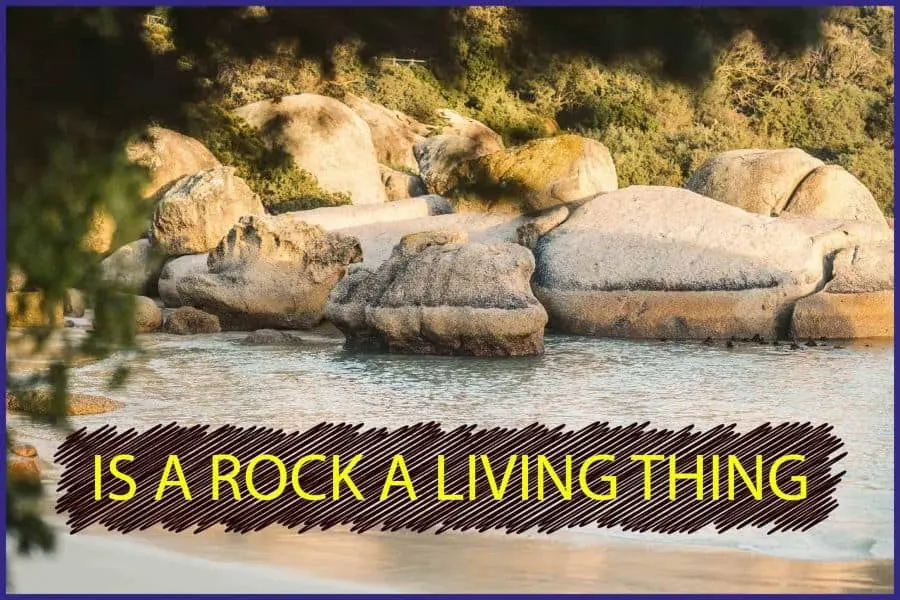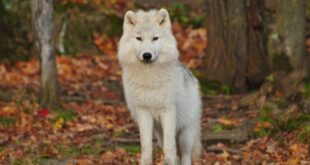We’ve all heard of the “rock of ages” phrase and that rocks were here long before we did, dating back to 3.5 million years ago.
It’s pretty safe to say that we all have a basic understanding of what makes an organism alive. However, is there a way to understand an object so much that we can classify it as living? What makes something alive?
We are about to see that living and nonliving things have a lot of differences. Many may surprise you.
Is A Rock A Living Thing?
Rocks are not considered living things because they lack certain characteristics.
The first characteristic is reproduction, defined as growth by cell division. Even though rocks may grow in size over time, they do so through large-scale chemical reactions rather than cell division.
A living thing can grow, change, and adapt to different factors such as place, time, temperature, or environment. Non-living things do not have these properties.
What Is A Rock?
A rock is a large piece of natural material that has been broken off from the earth’s surface and subsequently hardened by exposure to air and water.
A rock is often made up of many different minerals, which have formed together after undergoing intense heat and pressure from the earth, including clay, sandstone, limestone, granite, or slate.
Rocks form in a variety of ways.
- One way is physical weathering—the splitting down of rocks caused by wind, rain, or ice erosion. It could occur in thousands or even millions of years.
- Another way is through chemical weathering–the breaking down of rocks due to their chemical makeup; it can occur in a matter of days or even hours.
- Volcanic eruptions create magma, or molten rock, which cools off quickly and becomes a solid but still very hot rock.
Geologists use the term “chemical weathering” to describe the process by which rocks are broken down due to their chemical makeup.
Rocks that contain a lot of calcium carbonate, for example, can be broken down quickly when they come into contact with water.
In the presence of an acid, calcium carbonate dissolves and forms weak calcium ions and carbonic acid solution.
This weak solution is called “carbonic acid.” Carbonic acid can then go on to dissolve more calcium carbonate.
In a sense, rocks that contain calcium carbonate are slowly dissolving themselves! When a rock has been broken down by chemical weathering, it is called “weathered rock.” In this process, the ions in the water combine with minerals in the rock to form new compounds.
These new compounds are generally softer than the original minerals, and wind and water can easily wear them away.
What Is Life?
Life refers to the natural force that animates living beings and gives them the ability to grow, move, respond to stimuli, reproduce, and maintain their internal organization. A living thing is any biological process called life in biology.
A living thing can be considered alive when made up of cells and can carry out life processes, like metabolism and cell division. A living organism exhibits all or most of the following traits:
Reproduction
Organisms reproduce in a variety of ways. One way is that they sexually reproduce, where the male and female sex cells meet in the parent organism’s reproductive tract. Fertilization occurs, and the egg and sperm become one cell.
The other way is asexual reproduction, which produces copies of an organism genetically identical to its parents. The organism could use this trait to produce offspring without the help of a mate.
Sexual reproduction is more common in animals than asexual reproduction because it takes less time for an animal to produce a whole new generation of offspring.
In addition, many animals do not have an efficient way to produce new offspring by themselves, so they rely on sexual intercourse.
Adaptation
Adaptation is how an individual or population becomes better suited to its environment. This means that adaptations usually improve an organism’s fitness in a particular environmental context.
Organisms that live in different environments exhibit different traits. For example, a desert-dwelling lizard might have a very different appearance from a forest-dwelling lizard because it needs to adapt to survive in its environment.
There must be a genetic variation in the population to adapt to evolving. This is because adaptations are made of phenotypic traits, and genes determine phenotypic traits. The selected trait that increases an organism’s fitness will pass down from generation to generation.
Growth
The growth of a living organism is one of the most common traits found in lifeforms. It is also among the important traits to consider when classifying and identifying a living organism.
Growth is the increase in the size of an organism or object over time. It can happen in the growth of cells, animals, plants, or bacteria.
Homeostasis
Homeostasis is the process of regulating an organism’s internal surroundings due to changes in external situations. It has three main components:
- a sensor that generates a signal when the temperature, pH, and pressure of the environment changes
- a negative feedback loop that creates an opposing response to the condition that triggered the sensor
- a mechanism for maintaining an average steady-state.
The stability of an organism’s internal environment is critical to its survival, and organisms have developed many different ways to regulate their internal environment.
Temperature regulation is one type of homeostasis. The body has sweat glands and shivering muscles that generate heat or cool by changing blood flow to different regions.
Organization
The organization is typically a trait of living organisms because it is necessary to live. Organisms need to function properly, whether a cell or an organism. Without organization, there could be no life.
This trait can also be called cellular organization, the physical arrangement of cells in an organism. The cells in an organism can be arranged in different ways depending on the type of organism.
The cells are usually arranged into tissues for plants, then grouped into organs.
Metabolism
Metabolism is how an organism uses food to grow and reproduce; it is a constant process within the cells of living things, converting food into energy for life.
Every reaction we partake in, from breathing to blinking, requires metabolic energy. Metabolic reactions also produce carbon dioxide, water, and urea waste products.
Some energy sources, like glucose, are used directly by cells to produce adenosine triphosphate (ATP), which carries chemical energy around the body and stores excess chemical energy as fat or carbohydrate.
Response To Stimuli
An organism that can respond to stimuli is alive. A living organism can sense, send a response and reproduce.
When exposed to light, the organism is stimulated and responds by changing shape, color, or internal processes and is often expressed by motion.
What Is Abiogenesis?
Abiogenesis is a hypothetical process of life arising from non-living matter. It is a natural chemical reaction in unique environments devoid of living organisms, such as its early atmosphere.
The theory of abiogenesis states that non-living materials made the first life form, and it has evolved.
Certain conditions allow for abiogenesis to happen. The first condition is high energy availability, like when lightning strikes the ocean.
The second condition is low oxygen availability, which means there is not enough oxygen to react with the chemical molecules and break them down.
Abiogenesis may have occurred in the primordial soup. One hypothesis is that it happened when a comet or meteorite struck the earth’s surface, releasing some of the water and other substances that make up living cells.
The Distinction Between Living and Non-Living Things
The ability to have life
Non-living things are things that do not have any life. A good example of a non-living thing would be a ball. Anyone who has played with a ball knows that the ball is not alive in any sense of the word.
A living thing is something that has life inside of it. An example of a living thing would be a plant; because plants grow and reproduce just like humans do.
Eating and breathing
Non-living things do not need to eat or breathe. Living things will always have something to eat and always breathe. Living things can’t live without water, food, and sunlight.
Response to environment
Living things can respond to their environment. Non-living things are inanimate and cannot move or react to their environment. Living things can do these two things.
Reproduction and genetics
Living things reproduce because they need to pass their genetic material on to the next generation.
This is different from non-living things because if a tree falls over, it will still be there for future generations to observe, but there won’t be another rock if a rock falls over.
Genetic composition
Living things are made up of cells. Non-living things can be composed of cells or not.
Conclusion
Rocks are non-living things. We’ve outlined some of the key characteristics of living and non-living things in this article and provided you with a few examples. We hope we’ve helped clarify any doubts you may have had about the nature of rocks.
Hopefully, this information was helpful for you!
 Being Human
Being Human




